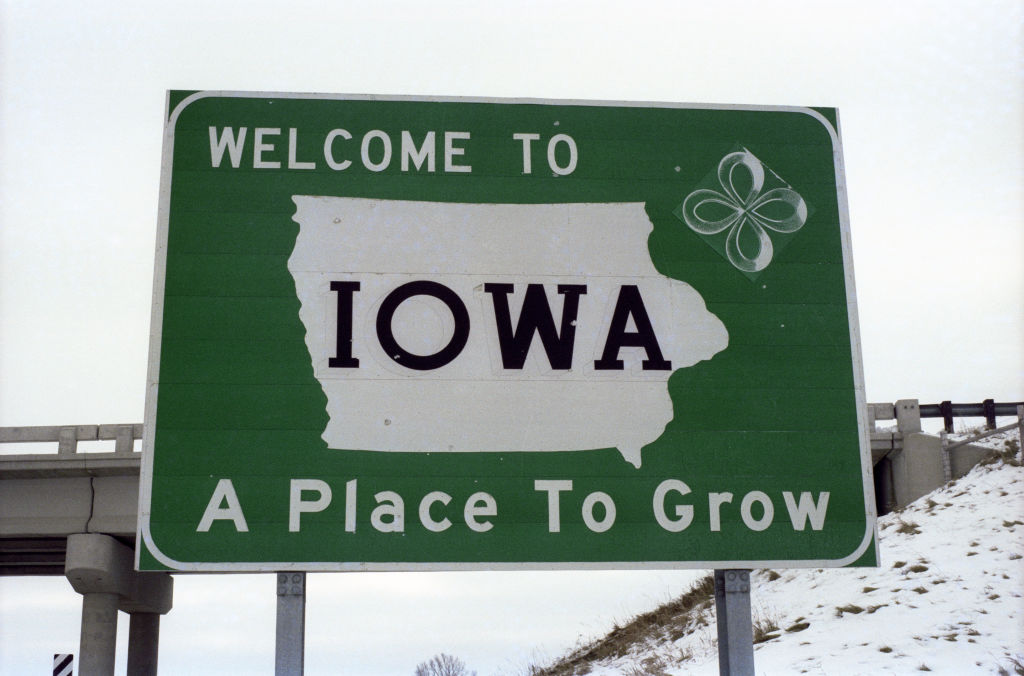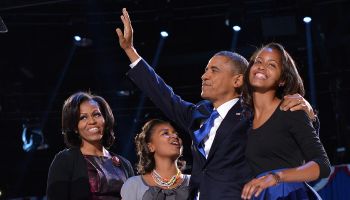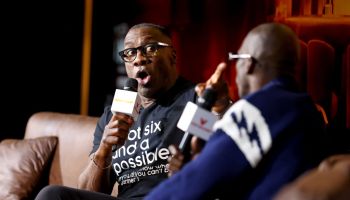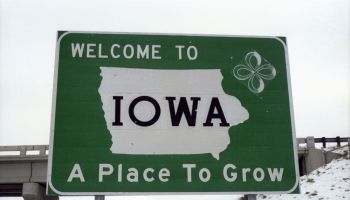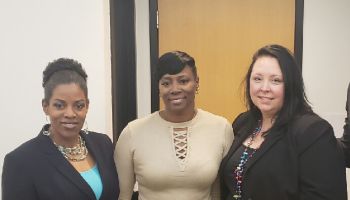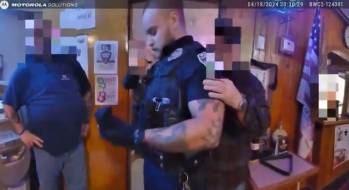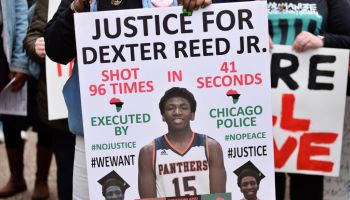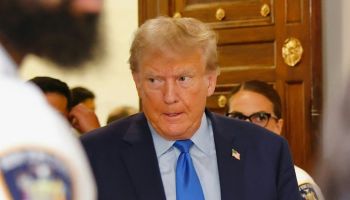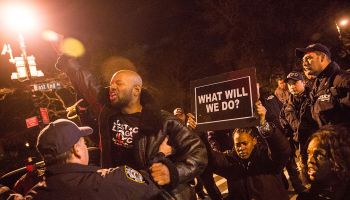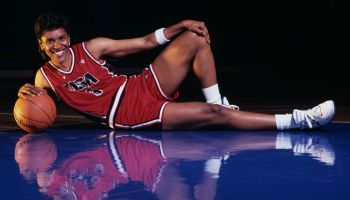President Wayne A.I. Frederick speaks candidly to NewsOne about recent controversies, addresses what he says are “inaccuracies” in a public letter calling for his resignation and explains how he plans to make his alma mater stronger than he inherited it.
Students refer to it as “the real HU.” Ta-Nehisi Coates calls it “the Mecca.” Whichever moniker is used, there is no question that Howard University is one of the nation’s preeminent institutions of higher learning. Located in Washington D.C. and founded just two years after the end of the Civil War, the historically Black university has an illustrious 150-year heritage brimming with markers of academic excellence and a long list of notable alumni such as Ossie Davis, Toni Morrison, Stokely Carmichael, and Kamala Harris.
However, in recent years, Howard’s shining reputation of Black excellence has been marred by leadership shake-ups and rumored financial uncertainty. Earlier this month, it was reported that President Wayne A. I. Frederick received a vote of no-confidence from the faculty senate. Taft Broome, the faculty senate’s chairman, cited concerns about financial mismanagement and leadership as the impetus for the vote. However, questions were raised about the legitimacy of the vote, with some members saying they were not present, nor aware that it would take place. Yesterday there was a full body meeting of the Faculty Senate and there was not enough support to move forward with a vote of no confidence, a vindication for Frederick’s broad support and leadership.
This comes just weeks after an anonymous group of faculty and staff members issued a scathing 16-page open letter to the Board of Trustees detailing what they believe are reasons that Frederick should depart his office.
“Wayne Frederick has demonstrated a remarkable lack of knowledge about administrative work and leadership; an ineffectual communication style which is mercurial, duplicitous, deceitful and brusque,” charges the letter.
Several groups and organizations from the Howard University community responded with letters of support, including the Howard University Staff Organization, the Howard University Alumni Association, and Dean’s Council, to name a few. The Board of Trustees also responded, citing, “A vote of no confidence is deeply troubling, wholly unjustified and counterproductive to Howard’s goals. In fact, it contradicts the very positive assessment this Board has of the President’s performance to date, his track record of success and the integrity and good judgment he exhibits.” The Board went on to note, “It’s clear that President Frederick, in close collaboration with the Board of Trustees, is executing a bold vision to drive growth, success, and chart a positive path forward for the next 150 years. We are unequivocally and wholeheartedly in support of our President, his vision and applaud his extraordinary leadership of Howard University.
Frederick, a Trinidad native, is a three-time graduate of Howard who was admitted as an undergrad at the age of 16. He was named interim president in 2013 (and was officially installed in 2014) after the previous president, Sidney Ribeau, announced his retirement after just five years in the midst of controversy over the school’s financial challenges and a drop in both the national ranking and credit ranking.
The president is not without supporters on campus—including students, faculty and staff—but he has faced very vocal criticism even prior to the anonymous letter. For example, a meeting with Education Secretary Betsy DeVos earlier this year was followed by student protests. The health of Howard University Hospital, an important fixture in the Ledroit Park community, has also been a point of concern.
NewsOne sat down with Frederick to discuss the criticism, the challenges he says he inherited when he became president and his plans for the future of Howard University.
What does the recent vote of no confidence (that some said was procedurally incorrect) mean for you?
I’m listening and it is my responsibility to address [such] things. Where there are legitimate concerns, I need to address them. The issue of the procedural nature [of the vote] and all of that, I don’t get into the politics of it. I have to address the issues that may lead to someone having concern about the direction in which I’m taking the university.
What do you think are the legitimate concerns?
People have concerns about the facilities. We have a dated campus. I’ve been transparent about that. If you go back and look at my addresses to the university, I’ve openly discussed that. But, of course, it didn’t get that way overnight. It didn’t get like that under my tenure. We have not built many new academic buildings for almost half a century, so as you can imagine, the buildings that do exist are under significant pressure. So, how do you change that? I think we’re making strides. By 2018, 62.5 percent of all the residential buildings will have been either renovated, new or less than five years old. That’s a significant and substantial show of progress from even just five years ago. But we understand that we have to do same thing with academic buildings and we have a strong plan to do that. That plan includes utilizing our other real estate assets in a way that they provide a steady revenue stream that they can substantially mitigate the capital needs of the rest of the campus and we are in the process of doing that. We’ve done that with Meridian Hill Hall, which was a residence hall on 16th Street [almost 2.5 miles from the main campus] that we felt we had an opportunity to monetize, for example.
[The Meridian Hill Hall deal] involves an extended lease with a $22 million cash payment up front and then certain revenue, revenue profit margins, and any forward sale activity we also benefit in terms of revenue streams as well.
So, what is the activity on the Meridian Hill site? Is it residential?
It is residential. They are going to convert it to condos. The building is an historic designation, so the external façade will be maintained. But it is also in a high rent district on that part of 16th Street. That money we are currently using to rehab our undergrad library as a result of that. That’s an example of taking a revenue stream and monetizing one asset to fund the ongoing needs.
They call that part of 16th Street the Gold Coast. If you compare the rents [in that area] to what we were charging for students to stay for semester, it didn’t make [economic] sense. The rents there could be $2400 or $2500 for a studio and we were charging maybe something like $800 a semester for a student to stay there. We obviously can’t charge the students more. That’s not the solution. We needed to bring more students onto campus itself. We were able to eliminate shuttle bus service [to the dorm.] It was a good plan for us.
What about ‘town and gown’ relations? How does Howard University interact with D.C. in general? Are there any affordable housing and or other community oriented endeavors?
Great question. We have our Barry Place project, which is opposite our Howard Towers and that is a project we’re working on with a developer. One thing we put in there is that we will have low-income housing in 15 percent of the units. We also have first rights to graduate and faculty housing as well. We are trying to make sure that we participate in what balance [for the changing community] looks like. That project is very close to campus, whereas Meridian Hill was already in a very high-rent area.
What did you inherit as far as the overall health of Howard University?
My predecessors have been managing significant financial challenges for quite some time. The landscape of healthcare has changed, as the nature of our government has changed, and therefore so has our relationship with the federal government and federal approvals. And also the higher ed landscape has changed. If you go all the way back to 1969 when James Cheek became president, during his 20-year tenure, he was able to leverage a federal appropriation to have it significantly increased over that time, as well as getting dispensations from the federal government to assist with the construction of new buildings on campus. Under his presidency, Howard went from having 10 schools to 17 schools. It really ballooned as a result of the federal government assistance. One may say that at that time, there was not as much emphasis on philanthropy. My suspicion is that because Cheek [who died in 2010] had to attend a Congressional hearing every year and make a case for the federal appropriation…he probably did not emphasize growing the university’s endowment. Congress recognized that [and] in 1986, Congress started to insist that 3 percent of the federal funds we get are part of a matching program. We have to raise the equivalent amount in order to get that 3 percent that goes into the endowment.
We have the largest endowment among the HBCUs and roughly a third of that endowment has come from that specific activity. Two, when you come into the 1990s, you have significant changes in healthcare. So the healthcare enterprise was sending money. You had regulations that were tightening and so the hospital and the healthcare business in general changed dramatically and you went from having a hospital that was the university’s financial juggernaut to a hospital that was actually draining and potentially pulling the university down. When you look at the 1990s, an attempt was even made to build a new hospital in a new part of town and looking at the changes being made. Then you come into the 2000s and you have “the Great Recession.” The unemployment rate was sky rocketing, and even more so for African-Americans. We saw that as we gave more financial aid to students, enrollment was still going down and the ability to pay the fees wasn’t there. There were attempts at raising tuition dramatically. We had two tuition raises of 15 percent and 12 percent that resulted in the net tuition revenue increasing 1 and 2 percent.
So you put all of that together and you have a hospital that is losing a lot of money, a student body in serious need of financial aid— and you have a gentrifying neighborhood, in which we weren’t participating in any type of development activity. So that is essentially what I inherited. To address those challenges, what I have gone about doing is looking for alternate revenue streams. Real estate is one, philanthropy is another. When I took over, our giving rate was just around 4 percent and it is now at 10.5 percent. We’re trending towards 12 percent.
How did you do that?
Engagement. I travelled to 20-some cities and went out and made the case to our alumni about what Howard University means to them and the nation and the broader global community and why they should support what’s going on and they responded. Now we are assessing our ability to participate in a robust capital campaign.
You mentioned the hospital being a financial drain. What are you doing to address that?
I brought in a new management team for the hospital. The healthcare business is very complicated. I have looked at very carefully is what is the market doing and the neighborhood we are in is not a market [where we can attract a lot of new business.]
Why?
[The area surrounding Howard] has gentrified and changed. You have an African-American population as a base, [but also] a growing White population and a younger population who are not necessarily ill and won’t use the hospital. So the biggest services you’re going to see there are probably women’s health and pediatrics. Our competition with the Washington Hospital Center is significant and those patients are going there to deliver their babies. I think with pediatric outpatients we do a good job. You come to our facility, especially on the weekend, you will find lots of the neighborhood folks bringing their kids in for [outpatient pediatric services.] But in terms of acute care, especially high-end acute care such as cardiology or complicated surgical procedures, we’re right by Washington Hospital Center where you think of inpatient pediatrics. From a competitive point of view, that is difficult. A number of our patients are still coming from Wards 7 and 8 [neighboring areas with large African-American populations]. So from a strategy point of view, it makes sense if we are able to practice and deliver the care where the patient is and that would be in Ward 7 and 8. So, one of the things that we must look is look at the options that the DC government is weighing. For example, an acute care facility and ambulatory healthcare. I think Howard Hospital could be a good option for providing that.
Are you saying you are considering downsizing the hospital and offering fewer services? What does this mean in a practical sense?
In a practical sense, if we can maintain an ambulatory healthcare presence on Georgia Avenue [the current hospital location], but also have an acute care faculty in Wards 7 and 8, I think that’s a better option because that’s where the patients are. When you look at it from a social obligation, if you have a pregnant African-American woman from Wards 7 and 8, come all the way over across the city to deliver a baby…we’re not doing the right thing as a city. When you look at the hospital in Wards 7 and 8, their ob-gyn services are not [adequate.] They are not delivering a large number of babies. Those women there are coming across town to do that. That’s but one example.
You still practice medicine. What type of surgeon are you and how often do you operate?
I’m a cancer surgeon. I operate about once a month. I haven’t operated as much this year so far. I might see patients once a month. I do mainly complex GI operations and one of the main reasons I continue to do that is because I’m one of the few African Americans who has been trained in surgical oncology and do those types of operations in the entire U.S. I continue to teach our residents who do those operations. I think that’s important.
You don’t have the typical background or professional history of a university president. How did you decide that you wanted to be the president of a university?
I don’t think I ever came to that conclusion as much as I was driven there. I have a life’s philosophy that guides me. I obsess about the journey of life and not the destination. So what I’m constantly trying to do is make myself better and prepare myself for whatever may come. So anything from getting my MBA while I was a full-time surgical faculty member, to participating in activities to educate myself further about the world of higher education are all part of what led to this without me ever really have the desire to be a university president, but really, just wanting to be a better faculty member.
Enrollment was one of the issues raised by the open letter issued to you earlier this year by anonymous staff and faculty members. What is the status of enrollment at Howard?
When I took over, one of the things I realized was that we can artificially increase enrollment. I say “artificially” because bringing people in and not having them finish is one of the big dilemmas of higher education. I was recognized that our graduation and retention rates had actually gone down. When I took over, our four-year graduation rate was down to 38. I realized that the main reason people were dropping out was because of finances. We went from giving $42 million in institutional aid in 2008 to about $100 million in 2013-14. That was not keeping the enrollment up. Students were still dropping out. Two years ago, we had the largest incoming freshman class in 30 years. Just last year, we decided that we could not give as much aid, so we went to an almost wholly merit-based system. We demanded that everyone who got some kind of aid from Howard would fill out a FAFSA, so we could see what his or her need was. Some of the families and students really pushed back against that, which resulted in us having the smallest freshman class in the past 20-some years.
We brought on Maguire Associates [an educational consulting firm] to assist us with an enrollment strategy. We’ve been issuing financial aid packages since December [and we] have hundreds of students right now who have already committed to coming to Howard [in the Fall.] This is going to take two to three years to figure out. It’s an evolving situation. If you look at the economics of the students, our own economics, what programs we have and what programs the students actually want. It will take time before this is a well-oiled machine.
Outside of being stricter about giving out financial aid, what is Howard doing about student retention?
Finances are critical in terms of the overall financial picture. Folks who can pay, we have to convince them to pay. There is this [pervasive] cultural notion that “if I send my kid to Howard, I’m doing Howard a favor because my kid has other options.” We have to get people out of that mindset. They have to realize that if you send your child to Howard, you are getting a significant return on your investment. We send more African Americans to medical school than anyone else. Over the past decade, we have sent more African Americans to STEM . that Stanford, MIT, and Yale combined. If you’re an African American and you want to become a doctor or get a Ph.D. in STEM, Howard is the best place to be. We have to make that argument. Two, we’re also looking at other retention issues like tutoring, advising, time management and that has been bearing fruit. Our four-year graduation rate is climbing. It’s up from 38 percent to 46 percent and we anticipate that the graduates we have for this year will put us over 50 percent. We’ve also increased the number of credits you can take each semester, from 18 to 21. You need 120 credits to graduate, so technically, if you took 20 per semester, you could graduate in three years. I just proposed to the board to allow students to pay for 42 credits up front, but you can take them in any combination of spring and summer as long as you are a full-time student and financially cleared before the summer. Two years ago, we actually began giving back 50 percent of your direct payment for the last semester [as an incentive to graduate on time.]
What are your thoughts on that controversial meeting between President Trump and other HBCU heads, as well as your takeaways from your meeting with Secretary Devos?
The sitting education secretary is an ex-officio member of Howard’s Board of Trustees. I think it is important to engage those whom we may not share typically philosophical thoughts about how to manage certain issues. In this circumstance a big part of the discussion was how Howard has [a significant number of] students from public high schools who successfully navigate their college careers here. [The secretary] met with a senior in elementary education who is actively teaching in a DC public school. That exchange was fantastic. That young lady was able to demonstrate to her the importance of her work. We imparted to her the importance of HBCUs in general, and Howard in particular.
The meeting at the White House was intended as a way to have some dialogue about HBCUs. The aspect that has gotten a lot of focus is the photo-op, but the bigger issue is that we have to make sure we are at the table and engaging. In the last administration, when changes were made to the PLUS Loan requirements, we were not at the table and that resulted in a drop in enrollment for HBCUs across the board…That doesn’t mean that I think there is some panacea of reason that is going to show up and HBCUs will suddenly be at the top of the agenda for the Trump administration. But at the same time, I think it would be a dereliction of duty if we simply walked away or isolated ourselves.
This is part of a bigger issue in this country. This election has really unveiled the cracks in our society. Where we thought there were minor fissures, we know realize they were canyons. That reality is what it is. Our response to that reality is very important as a nation. Just like our civil rights leaders of the past, we have to be engaged and educate people who are ignorant of who we are and what we need. I’m worried about this tendency towards isolationism and a tendency to sit in an echo chamber. That’s dangerous, that worries me personally.
Engagement is good, but would you agree that how you engage is equally important?
Yes, I think how you engage is critical. To establish the engagement is critical and making voices heard on an ongoing basis. This is especially true for university students. Whenever our students protest or kneel or sit for the national anthem, for example, I am always supportive of students expressing themselves. However, at some point, you stand up and take action.
How do you feel about your relationship with the education secretary and the Trump administration in general?
That relationship has to be measured and I have to speak my truth about issues and also speak out when I see things that could hurt the university. I have to do that on an ongoing basis. And I think I have been doing that and I did that with the Obama administration. We also have to speak out on offering solutions and alternatives, like the Howard Campus West program. Diversity in Silicon Valley is low, so now Howard is providing a solution. Google educates our students and those who do well, get hired, those who don’t do well, don’t get hired. So, we’ve talked about the lack of diversity, but we’ve also presented a potential solution. Those are the types of things we need to do with the administration.
What is the future of Howard University?
Howard University has to be a beacon of academic excellence and I put that out as a simplistic focus. Too often in [the world of] higher ed, we over complicate things. We get further away from our goal which is to prepare people to be academically excellent. We have to create a robust environment. Over the past year, I have a committee made up of people from all over the campus putting together compiling surveys and gathering data to put together a strategic plan. Now we’re in the process of getting that vetted and filled out by the different constituents.
So, as of right now, there is no strategic plan in place?
Correct. We have to make sure we have all of the [necessary] information. When I took over, the main issue was the gravity of the financial circumstances and we had to engage with that. I think putting together a strategic plan without knowing how we would finance it would be doing that for the sake of show. It should be tightly tied to resources so that we can successfully execute the plan. We can sit here and come up with the most glorious looking strategic plan, but if we know it’s unattainable, I don’t think that serves anyone. The board was clear that they wanted me to stabilize the finances and we’ve been able to do that. The hospital is now turning a profit, that’s headed in the right direction and so we need to establish a plan that fulfills the needs of the university.
By Fall 2017, we will have a strategic plan. We have a draft plan now that I will share with the Board of Trustees and other stakeholders for feedback.
How is morale on campus?
We do need to increase morale among the faculty. I think some of that is due to a lack of resources and they are not seeing facilities improving as rapidly [as they may like], but this is something that has been going on for years. Some faculty members have been at Howard as long as I’ve been alive. I want them to understand that I empathize with and understand that. These are the plans to move that forward and it will not happen overnight. These things will take time and we have to commit to the long-term.
There are remarkable things going on at Howard and sometimes those positive things don’t get the same attention [from media and otherwise] as our challenges. In the past two years, our students have won five major scholarship awards because of our dedicated faculty and staff. In the school’s 140-year history preceding that, we won 12 of those types of awards. That’s a testament to our faculty and the quality of our students. That should be lauded. That’s what Howard is and that is what Howard is doing. I am confident that we can acknowledge our accomplishments while simultaneously addressing our challenges and overcoming them.
SEE ALSO:
Howard University Faculty Call For President’s Dismissal In Blistering Open-Letter
